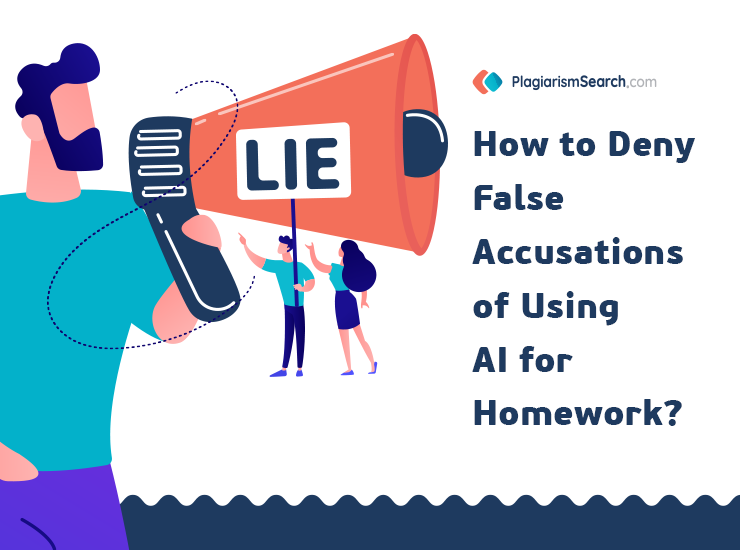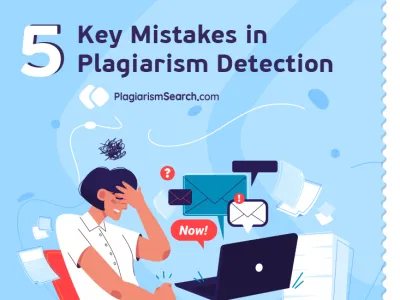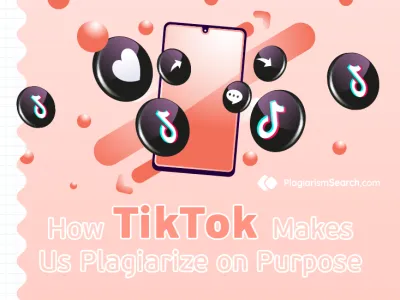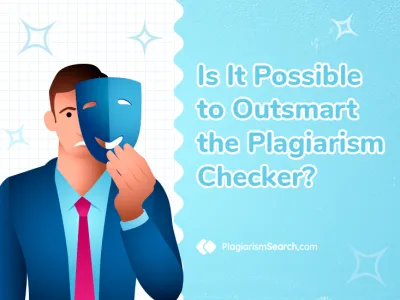
Protecting the Authenticity of Your Academic Assignments
A cheating epidemic! Death of creativity! The end of academic honesty! There are so many scary of prospects of popularity various AI tools, including ChatGPT, have among the students that it seems that nothing is more important nowadays than to get a perfect AI detection tool for all schools around the world. Nevertheless, it may sound unexpectedly weird that educators are now looking for ways how to avoid ai detection in writing but still test the students’ knowledge. Why is that happening? There were hundreds of cases when students were falsely accused of using ai. Thus, a lot of universities give up on using detectors of AI-generated content over the accuracy and fairness concerns. More than that, it is a matter of crucial concern for a student to know how to get out of plagiarism accusation just in case it happens to them one unlucky day.
Accuracy Rates of AI Detector Tools
Such tools as PlagiarismSearch.com make it possible for schools to forget about conventional dishonesty, copy pasting the stolen ideas, and plagiarism in its pure form. At the same time, it is much more complicated with AI as even the most sophisticated software cannot guarantee that the AI report does not contain any false accusations. Schools need to figure out whether there are any other methods of preventing massive cheating other than using tools which give results without any solid grounds for them.
Business Insider refers to the case of Vanderbilt University which stopped using AI detection tools because of the initial 1 % of false positive rate. It seems that 1 % is a minor part, but according to the estimates, up to 75,000 academic papers got a label of partially or entirely generated with AI by mistake made by AI detection in Turnitin. This one percent equals to thousands of people accused of using ai although they have done nothing wrong.
Have you ever heard about checking US Constitution for AI-generated content? GPTZero detector estimated the likelihood of AI use in it as very high!
All in all, what can be more convincing than the argument of OpenAI itself which states that educators should not use its own AI detectors as they are unreliable?
How to Get out of Plagiarism Accusation
Let’s fancy that you have submitted your essay and got an ai detection false positive result from your teacher. For sure, you are shocked and disappointed in the concepts of justice and academic decency. You know for sure that you have done the assignment yourself without any use of AI. What should you do next?
The Washington Post suggests the following strategy for those with ai false positives:
- Stay calm
Negative feelings will not help you at all. Instead, you should take control over your emotions and start fighting for your reputation.
- Do not accuse anybody
The practice of checking papers for AI use is new to instructors and they still need time and experience to be able to distinguish between true and false reports, if that is ever possible. What do the tools use to draw a conclusion about the origins of your paper? Can they provide any links or evidence? No! None at all! The only foundation for all blames is a statistical pattern for analysis. So, it is time to start a conversation with a teacher instead of getting offended and angry.
- Collect all the evidence
You cannot just claim that your paper is original, you need to prove that. There are both gpt zero false positives and gpt zero false negatives; so, you need to persuade your teacher to review your paper again.
- Save the history
Let your teacher see the changes you have been making in the file. The history of the file keeps record of the time you have spent on your work and the sequence of your actions. So, it will be clear that your essay appeared not within a few minutes.
- Make sure that all the sources are correct
One of the features of AI writing is presence of wrong citations, made-up facts, and incorrect sources. Let your instructor see that you know which ideas from the referenced sources are cited and you can prove that you have access to these articles or books.
- File a complaint
You have the right to appeal if you have got an ai detection false positive report and you want to deny the academic misconduct you are accused of. It is also a good idea to check on the school rules. It may appear that your university does not include AI detection into the maintenance process of academic integrity.
For sure, the way to justice will not be easy. USA Today tells a story of William Quarterman, who was accused of cheating on history exam. Using GPTZero for checking, his professor gave him a referral for academic dishonesty and a failing grade. Eventually, after the court proceedings, William was cleared of all accusations, but it took him a lot of time and nerves and caused him terrible panic attacks to get the grade he truly deserved.
Do all students write their papers themselves? No, they do not! Can ai detectors be wrong? Yes, they can! So, what is the right way out of the situation which is a stalemate? Is it better to take no disciplinary actions for AI use as it cannot be proved? Does it make sense to develop better detection software, taking into account the fast evolving nature of AI? At present, educators are at a loss, being torn between the fear of false accusations and disastrous prospects of AI cheating.
Voila! It is a new reality we now live in. What schools actually need are strict implemented codes of conduct as well as guidelines on AI use. Having consistency in school policies, it will be easier for the teachers to deal with potential cheating, ask the right questions, and fight with plagiarism. At the same time, it will be easier for the students to fight back and protect themselves not to end up in a disastrous situation.



